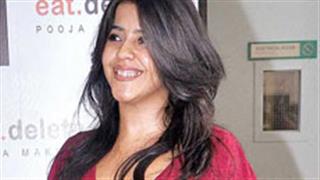Rituparno Ghosh's new film Chitrangada, scheduled for its Indian premiere promises to explore 'a road less travelled' as per the promos,
exploring same-sex relations.
The question occurs, do men and/or women trying to redefine and reconstruct their gender
and sexual identity in physical, social and emotional terms face an identity and a relational conflict within themselves and that's being
portrayed increasingly in Indian cinema and television? At least, some of the recent films seem to tackle this complicated subject.
In Chitrangada, director Rituparno Ghosh himself plays the main role of a talented choreographer and dancer taking inspiration from
Rabindranath Tagore's dance drama of the same name.
The story is drawn from an episode in the Mahabharata but this
story is not similar to the Tagore story except that here Rudra Chatterjee, the protagonist, plans to stage Chitrangada in celebration of
Tagore's 150th birth anniversary.
Interestingly, Rudra decides to perform the role of Madana, the God of Love and not Chitrangada. As rehearsals begin, Partha, a
percussionist, wishes to join the dance group.
Rudra and Partha fall in love and consequently, wish to adopt a baby. As in
India, two men cannot adopt a baby legally, Rudra considers undergoing a series of surgeries to become a woman. But a deep sense of
self-conflict sets in about his true sexual identity.
If one can recall, Sohini Dasgupta made I Could Not Be Your Son, Mom (2004) on Teesta Das, a transgender person who refuses to
remain either cloistered or be part of a ghetto group, but desires to belong to the mainstream. The film aimed at breaking the conspiracy
of silence on Gender Identity Disorder and about people who are victims of such disorders.
The fact that they term it a 'disorder' proves that we are still not prepared to acknowledge and accept people with alternative gender
preferences - a boy who seriously wishes to become a girl through surgical processes or vice versa.
`Teesta Das, the
subject of the film, not only accepts and acknowledges that she once was 'a female trapped n a male body' but is pretty vocal about her
choice, ` says Dasgupta.
Slowly, Teesta becomes a kind of a cult figure in the media. Irrespective of its quality in terms of
aesthetics and documentation, I Could Not Be Your Son Mom is an honest tribute to a woman of courage who refused to take her birth
for granted.
One cannot deny that Deepa Mehta's Fire was a turning-point film in bringing lesbian relationships out to the open. Fire garnered a lot of
critical attention from political progressives, liberals and fundamentalists. Fire's most compelling point is the manner in which it has
become a public text, the subject of controversy in the media and the audience.
It focuses on a nascent lesbian relationship
in a film intended to reach a mainstream audience. The fact that it has elicited such strong reactions from critics and spectators is
perhaps its most redeeming quality.
Nandita Das, one of the two lesbian protagonists in Fire, feels that `misrepresentation or derogatory connotations to the characters by
filmmakers can stigmatise the community and force them to remain closeted.`
Vinay Pathak who has an important role in the film Straight, says, `When Parvati Gopalan, the director, gave me the script of Straight, I
said 'wow!' I play the role of a man confused about his sexuality, who cannot figure out if he is gay or straight, and I knew Parvati, a
sensible filmmaker, would tell the story honestly, the way it should be told.`
Based on the real-life experiences of Dominic D'Souza, a champion swimmer who was gay, Onir's My Brother Nikhil tackled
homosexuality without treating it like an ugly joke, a dirty alliance or an aberration. The gay relationship between the swimmer and his
partner was treated as normally as one treats a so-called normal couple on celluloid.
They were shown to be as intimate, as insecure and as jealous in their interaction as any other couple would be. They were happy but
had their share of tiffs and squabbles, the one trying to gear up to bear the imminent loss of the other to HIV/AIDS. The film ran to
packed theatres at multiplexes in urban metros across India.
The film also deserves appreciation for breaking the socially conditioned stereotype of the gay as effeminate, with a soft voice and
graceful, feminine body language. Both Nikhil and his partner Nigel are handsome, muscular and easily passable as heterosexual.
Onir feels the acceptance of homosexuality in Indian films will happen only when the characters are portrayed without fussing
over them. `For example, why not let one of the band members in Rock On!! be gay and leave it at that without elaborating on it?` he
asks.
Does the 'openness' of Abhiroop in Kaushik Ganguly's Bengali film Just Another Love Story define the social acceptance of the gay
persona in contemporary Indian society?
Or does he too, suffer from the sense of social ostracism as the other real-life gay
character in the film, Chapal Bhaduri does, cleverly disguised under the veil of his fame and charisma as a successful filmmaker?
Is his flashy style of dress and make-up actually a way of hiding his insecurity? Or is he trying desperately to make a point as
wild-life photographer Uday asks him once? These questions are left open.
Just Another Love Story is a very unusual film about the selfishness that forms the foundation of human relationships. This is shown
through two beautifully interwoven love stories between two men spanning two generations. The delicate bonding, emotional and
physical, is handled with the sensitivity it demands minus the sensationalism it could have succumbed to.
Living alternatively
Monday, August 13, 2012 12:44 IST




















